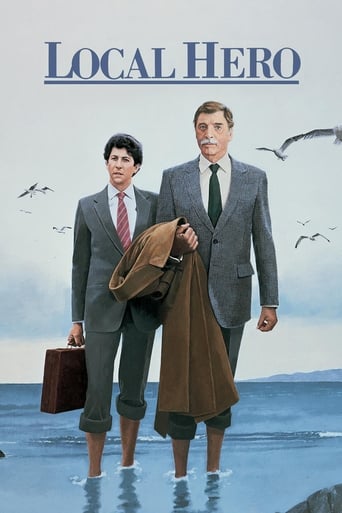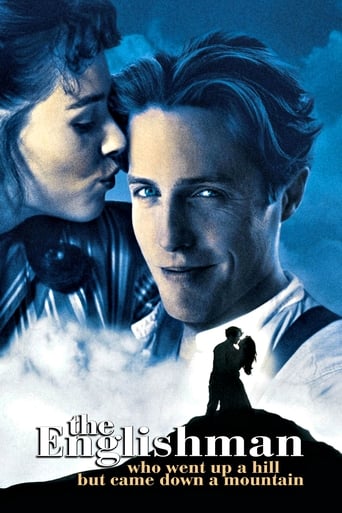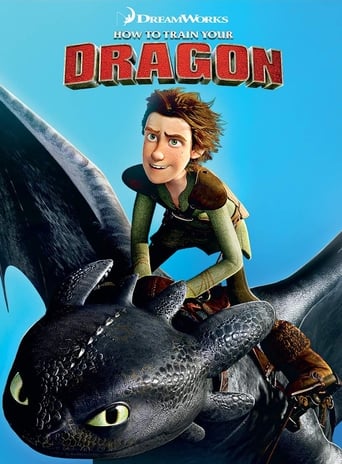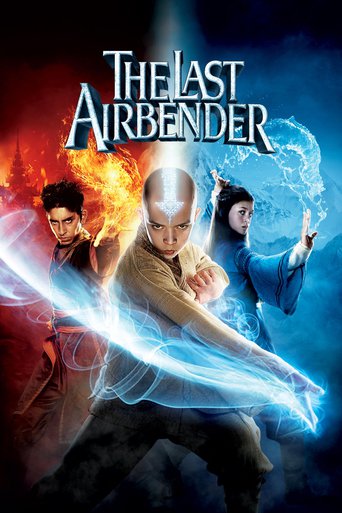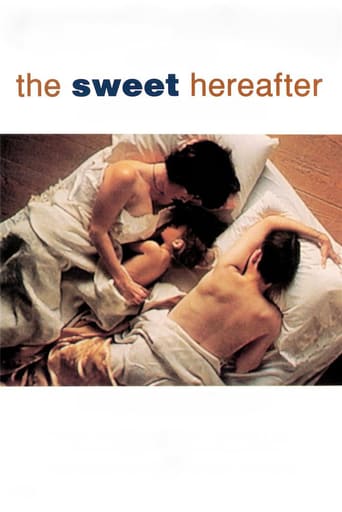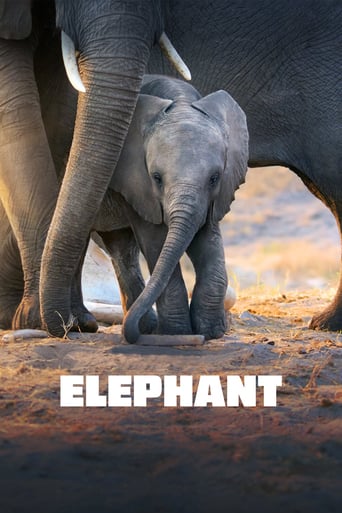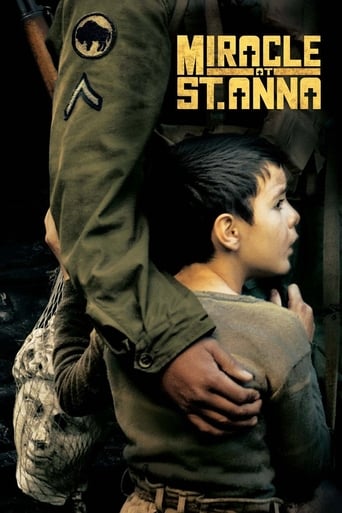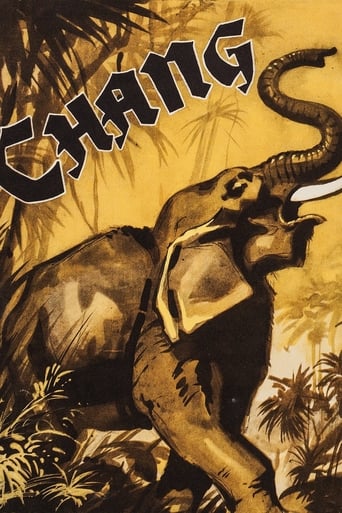

Chang: A Drama of the Wilderness (1927)
Elephants disrupt the lives of a family deep in the jungles of Northern Siam, and an entire village.
Watch Trailer
Cast
Similar titles
Reviews
This is a tender, generous movie that likes its characters and presents them as real people, full of flaws and strengths.
A story that's too fascinating to pass by...
It's a good bad... and worth a popcorn matinée. While it's easy to lament what could have been...
The film never slows down or bores, plunging from one harrowing sequence to the next.
How this was nominated for Best Picture at the Academy Awards is beyond me. This is not a movie, but a documentary- and not a good one at that. The title cards for this silent movie try to give the impression of grandeur to the jungle whilst explaining what a simple Siamese family is up to. However, they end up as hokey, antiquated and unnecessary.Most of the film is spent on how the Siamese people trap or kill animals or escape from them. It appears that most of the killings were for the benefit of the film crew as the animals did not look like they posed a threat to the people normally. As for the family, I did not care what happened to them.Dull and boring. I have seen better documentaries on 'Sesame Street'.
Although they weren't born in that decade, "adventure documentaries" were popular in the 1920s. The first big one was Robert J. Flaherty's Nanook of the North (1922), followed by films such as Ernest B. Schoedsack and Merian C. Cooper's Grass (1925) and Flaherty's Moana (1926). Nanook of the North covered Inuit culture in the Canadian section of the Arctic Circle, Grass followed the Bakhtiari tribe in Iran, and Moana was shot in Samoa. Chang, also directed by Schoedsack and Cooper, is set in northern Siam, or what is now known as Thailand.These films were an outgrowth of earlier works such as Martin E. and Osa Johnson's Cannibals of the South Seas (1912) and Paul J. Rainey's African Hunt (1912). "Adventure documentaries" were one of the more exciting things that could be done with film in its early years--television didn't yet exist and we didn't have today's ease of travel, so the cultures displayed were truly exotic for most audiences.These documentaries were always questionable as journalistic depictions of reality, however (as documentaries still often are--there are many fascinating philosophy of film issues surrounding this). Clearly some aspects of these works were staged. Chang was unique in that its overall content, including "characters", "plot" and so forth, was entirely made up. As Schoedsack said, "It was as carefully constructed as anything made in a studio; only our (raw) material was not manufactured". It turns out that Chang: A Drama of the Wilderness is as much fiction as Andy Tennant's Anna and the King (1999), or at least as fictional as Ruggero Deodato's Cannibal Holocaust (1980), with which it also shares scenes that should make any self-respecting PETA member go into a coma, or pick up an automatic weapon. I'm not quite a member of PETA, so no need to don your bulletproof vest.That the raw materials were not "made up" makes Chang unique. It's fiction shot in an authentic location, using "authentic people" who were not actors, and recreating largely authentic kinds of scenarios and settings. The star of the film, Kru, plays a man with the same name in the film. Kru's real life kids, Nah and Ladah, and pet Gibbon monkey, Bimbo, play his kids and monkey in the film. His wife in the film, Chantui, was really the wife of one of Kru's friends. The "plot" has Kru and his family as a bit more primitive than they really were, trying to eke out a meager existence in the dense jungles of Northern Siam. The film opens by showing their daily routines, then shows them, their livestock and eventually their crops (a rice field) being threatened by leopards, bears and eventually elephants. The film is largely about Kru and later his fellow villagers trying to rid themselves of these problems, which often means trapping and killing animals (and there is a lot of other animal handling in the film that would disturb modern western audiences). The plot isn't complex, but the film is enrapturing to watch, not only because it is so well made and still seems exotic, but now because of the glimpse of "reality" it offers 80 years back in time.In real life, Kru had been a fisherman, a hunter, a trapper, an evangelist, and a carpenter. And when Cooper and Schoedsack arrived, he functioned on their expedition as their interpreter, guide, "philosopher", and he was in charge of finding the lions, tigers, bears and other wild animals that would be used in the film. Kru got the gig because he was a friend to some missionaries in the area.It took weeks to reach the remote jungle area where most of the film was shot. Prior to shooting, Cooper and Schoedsack spent months studying natives and animals, while they figured out the best way to film them, basically making up their story on the fly (and a lot of it was constructed via later editing and creative intertitling). Given the conditions--which included just the two-man crew in high heat and humidity with relatively primitive cameras, the cinematography in Chang is remarkably crisp. This is one of the first films to be shot on panchromatic rather than orthochromatic stock, and this enabled finer, more realistic gradations of gray in response to various filmed colors. They had no artificial lighting, and had to shoot in thick jungles. The intense heat caused the animals to stay undercover, so they had to shoot most of the film in early morning. Schoedsack would often be precariously perched on primitive platforms or sheltered in hides and pits that offered little protection. They would often trap animals, then photograph them when they'd let them loose. Three men on the crew were bitten by pythons. Schoedsack had recurrent malaria and sunstroke and often worked while having a very high fever. The skillfully edited material tends to be exciting and dramatic on a surface level, but when you think about Schoedsack being narrowly missed by tiger and elephants while filming, it's that much more fascinating.Since Chang is of a different era, the subtexts are very different than they would be if the film were made now. The jungle in the film is not an Edenic paradise, but a menace to be conquered at best and tolerated at worst. This is amplified more than we might expect by showing the natives to be not very adept at safely building their homes and villages. It's difficult to believe that this wasn't exaggerated to amp up the drama, but as drama, it works, even if it's not very truthful.It's also worth noting the score on the Image Entertainment DVD, provided by Bruce Gaston's Fong Naam ensemble. They skillfully weave traditional and modern tonalities and instruments of the area to create charming music that often resembles Wendy Carlos' Balinese gamelan-influenced pieces on works such as Beauty in the Beast.This is an entrancing, historically intriguing film.
This is a thoroughly amazing and brilliant film, that strangely enough not too many of the newer film-buffs have seen, despite the universal fame of Cooper and Shoedsack due to 1933's legendary "King Kong." Actually, they were almost as famous before that. When "Chang" came out in 1927, pre-King-Kong, post-Flaherty's-Nanook and Cooper and Shoedsack's own earlier "Grass," it became one of the most popular films ever made. The reason is simple: unlike the moderately successful, equally brilliant but more national-geographic-like and meditatively paced "Grass," (plenty of people may have accidentally stumbled upon it and seen it looking for films about Marijuana!) which deals with the emigration of Persian Nomads away from the winter and towards the land that has "Grass," this one is set in the middle of a sweltering, friggin' jungle in Siam (Thailand today), amidst wild animals, and has non-stop danger and adventure from beginning to end, not to mention a hilarious sense of humor. The Thai woman in the film is actually not the spouse of Kru, the main actor, who was Cooper and Shoedsack's interpreter, but the wife of someone else living there. All these people were acting in the film without ever having seen a movie in their lives, reacting to these incredible events as they happened. Tigers, Leopards, rice farmers in the middle of a jungle running up coconaut trees to escape from them, Monkeys named Bimbo, and of course, Changs (meaning Elephants in the local language of Siam), and the big Chang/Elephant herd stampede, one of the greatest sequences ever filmed by anyone--all this is in Cooper and Shoedsack's film, which they shot all by themselves, with NO CREW, NO LIGHTING EQUIPMENT, and a 70,000 dollar budget which went up only to about 95,000 when the film took a little longer than expected, and they put some money in out of their own pockets which the studio later reimbursed. The new music by Bruce Gaston is absolutely brilliant, using a combination of traditional Thai music and modern sounds but never sounding trite or superficial. So many silent films suffer from bad, endlessly repetitive soundtracks that make you want to tear your hair out, this restored version of "Chang" on Image DVD isn't one of them. Rent it off the Internet or just go ahead and buy it, it's worth every penny, has a good transfer, an informative commentary track, and believe me, it's one of those films that you'll want to watch over and over again.
This documentary was nominated for Artistic Quality of Production for the very first Academy Awards. The category appeared only once, apparently to give recognition to works with more critical than commercial success. Chang holds up very well and despite at times being too ridiculous for words is well worth viewing for the shots of animals in the wild and an enchanting musical score added in re-release. Brought to you by the same production team that did the original King Kong.

